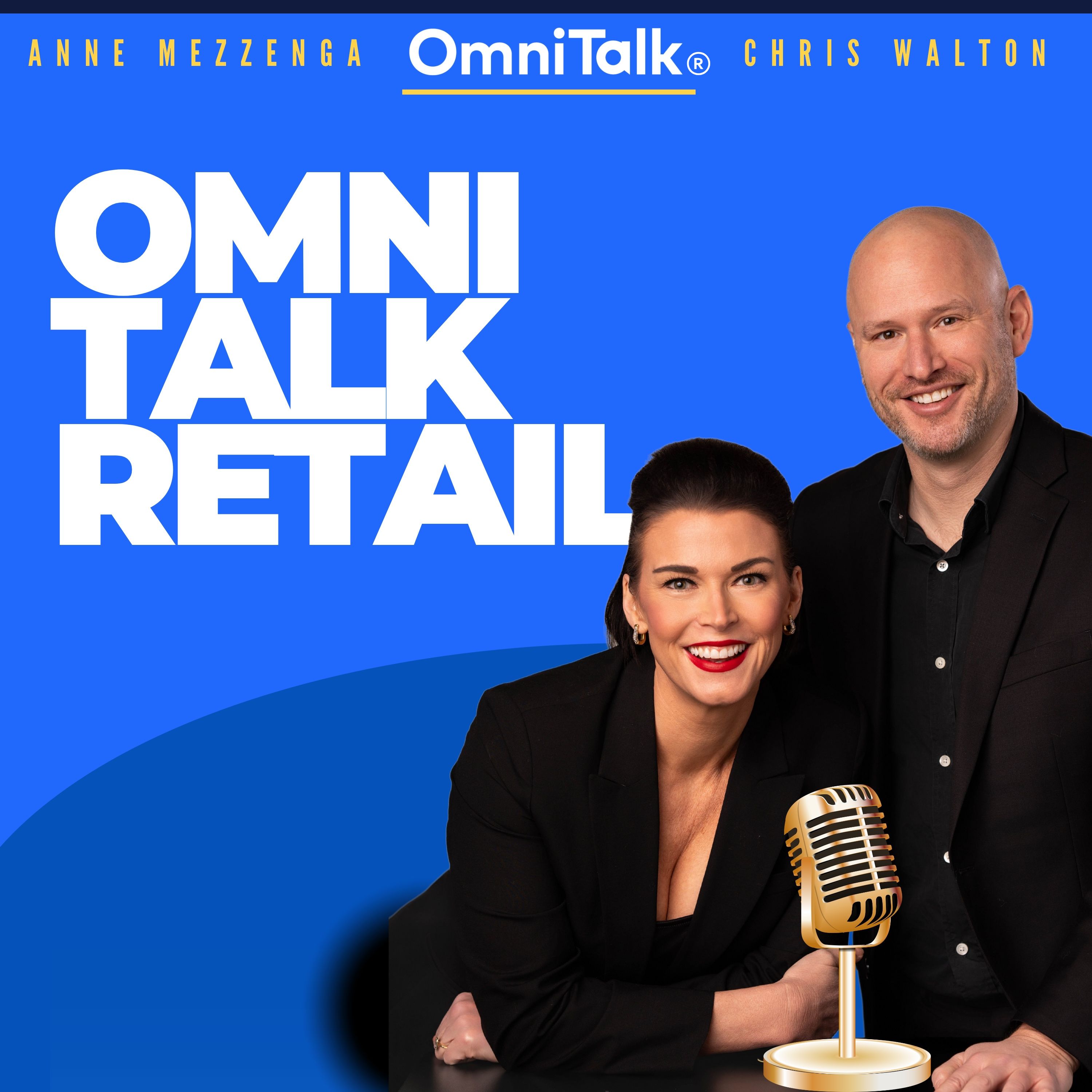Retail Automation at Scale: What It Takes to Deploy AI, Robotics & Data-Driven Tasks Successfully | 5IM
In this latest 5 Insightful Minutes episode, Caitlin Allen, SVP of Market at Simbe, breaks down the key misconceptions retail executives have about automation, why data quality is critical, and how top retailers are scaling AI-driven solutions.
Learn the difference between good and bad computer vision AI, how autonomous robots are driving efficiency, and why collaboration between HQ and store teams is essential for successful tech rollouts.
Plus, hear real-life "Aha" moments from retailers who have discovered hidden inventory and optimized operations through AI-powered insights.
Key Moments:
🔹 (0:18) – Common misconceptions about retail automation
🔹 (0:44) – The three key priorities: data quality, scalability, and store coverage
🔹 (2:22) – How to distinguish good vs. bad computer vision AI
🔹 (4:26) – Bridging the gap between HQ and store operations
🔹 (5:49) – Eye-opening insights: Retailers discovering hidden inventory
🔹 (6:13) – AI’s role in e-commerce accuracy, automated reordering, and merchandising
Music by hooksounds.com
#retailtrends #retailtech #robotics #retailinnovation
Sponsored Content
This podcast uses the following third-party services for analysis:
Podcorn - https://podcorn.com/privacy
Transcript
Foreigning us now for five insightful minutes is Caitlin Allen.
Speaker A:Caitlin is the SVP of market at Simbee.
Speaker A:And Caitlin is here to share her thoughts on the puts and takes of deploying AI and robotic automation at scale inside retail organizations.
Speaker A:Caitlin, let's start off with this.
Speaker A:What, what do you think are retail executive buyers largest misconceptions when evaluating retail automation?
Speaker B:It's no longer about if automation is driving value, but how.
Speaker B:And so following where industry leaders invest is important.
Speaker B:And we see the top CEOs and CFOs prioritizing three things.
Speaker B:The first is data quality, then scalability and then store coverage.
Speaker A:Yes.
Speaker B:Know with the onset of AI, modern data models are needed.
Speaker B:And yet poor data is the Achilles heel of most automation solutions.
Speaker B:And so we see vendors, we see retailers rather working with vendors that, that really work with high data standards, defining those necessary elements in history and quality related to scalability as they're reinventing retail operations.
Speaker B:Retail, retail's best are testing automation in areas like on shelf availability and price integrity to get started.
Speaker B:And then they're looking at scaling other use cases be it across allocation planning, forecasting, planogram compliance or what have you.
Speaker B:And then the final piece is store coverage.
Speaker B:And you know, today retailers are tracking when products arrive and when they leave, but they have, they lack visibility into their store of what happens in between that that point in time.
Speaker B:And so top CEOs and CFOs are prioritizing autom that surface the actions that matter most that they can start to understand what true execution looks like in the store.
Speaker B:And I would say in closing that all of those three priorities really expose the misconception that leads when evaluating retail automation which is over rotating on one device type.
Speaker B:This is really a conversation that needs to be about combining sensors for optimal coverage and data quality.
Speaker C:Okay, well Caitlin, we know that Simbi uses computer vision AI.
Speaker C:It's still new to some of the retailers listening to our program.
Speaker C:So can you help us identify what differentiates good computer vision AI from bad?
Speaker B:Sure.
Speaker B:So computer vision is what's used by things like fixed cameras on the shelf or autonomous, autonomous mobile robots, et cetera, just to kind of ground that in something that we can all see.
Speaker B:And I would say one factor really separates high value computer vision from the rest with two key supporting elements.
Speaker B:So the main thing that's important is value.
Speaker B:That's been proven at scale across multiple chain wide deployments, in multiple retail subsectors, in geographies and use cases where there's many applications.
Speaker B:It's easy to claim that you have a product that does certain things.
Speaker B:But then when, when vendors or when retailers dig in to verify vendor claims, they often find out that, you know, claims might be a little hand wavy and really like.
Speaker B:The reason I start with that non technical answer is this.
Speaker B:This is about the business outcome, right?
Speaker B:That's how to, to really take a sense for whether computer vision is good or bad.
Speaker B:And then the supporting points for that are really around depth perception and total cost of ownership.
Speaker B:So depth perception is basically another way of saying that good computer vision sees in 3D mobile robots have become known as the most accurate and scalable and cost effective retail solution because they can move around and that eliminates data coverage gaps.
Speaker B:And that also relates to the topic of total cost of ownership.
Speaker B:When you have just fixed cameras, for instance, you have hundreds of them per store.
Speaker B:That really drives up your costs and your maintenance as well as your risk of damage.
Speaker B:Whereas a robot really requires minimal infrastructure and it's kind of the difference of managing just one device versus hundreds.
Speaker B:So I would say bottom line, computer vision is really about having proven results at scale in prior applications.
Speaker B:And that's especially the case when it is backed by a solid business case that spans depth perception and cost efficiency.
Speaker A:Caitlin Oftentimes, and we've lived this, we see a disconnect between the stores, organizations and the HQ side of a retail operation.
Speaker A:So what do you think are the most significant disconnection points between those two sides of the operation when it comes to retail tech deployments?
Speaker A:And, and what, if anything, can both sides do about it?
Speaker B:Successful rollouts?
Speaker B:Chris they don't just test technology.
Speaker B:They're really more dedicated about building momentum across the organization.
Speaker B:And so we see the best retailers bridge that gap by doing three things.
Speaker B:Picking representative pilot stores that reflect real business realities like store size, sales volume, you know, operational readiness, tech savviness.
Speaker B:When they select their pilot stores, the second thing they do is stack rank their KPIs.
Speaker B:And that's really about prioritizing the one or two that matter most.
Speaker B:And that's usually something like profitability and on shelf availability and sometimes price accuracy.
Speaker B:And then the third piece is around engaging store teams early, right?
Speaker B:No one wants something to be thrown over the fence at them.
Speaker B:So engaging store teams in decision making, thorough training, development, and emphasizing automation's role and being a power tool for them, not as a replacement of labor, really brings things over the line for all parties involved.
Speaker C:The best thing about what happens when what you just were talking about takes place in a store is that there's some really big aha moments for those customers who are deploying robotics.
Speaker C:Do you have any good examples that you could share with us quickly?
Speaker B:Two come to mind.
Speaker B:So most of those top performing stores that we're talking about, they find that 60% of the items that they believe to be out of stock actually to be in store.
Speaker B:So over half of the items they think they can't sell are there to be sold which is an amazing aha.
Speaker B:And then I think the second Ann is really around kind of longer term use cases of understanding what real time shelf conditions and precise item location can do to inform things like better e commerce accuracy, automated reordering and demand forecasting and then merchandising at scale to the effect of things like retail media and working with suppliers and vendors.
Speaker B:And that's such a privilege to see those kind of ahas go off because it's kind of rare to see your business in a new light.
Speaker B:So that's one of the things I love about my job.
Speaker A:Great stuff, Caitlin.
Speaker A:Thank you.



